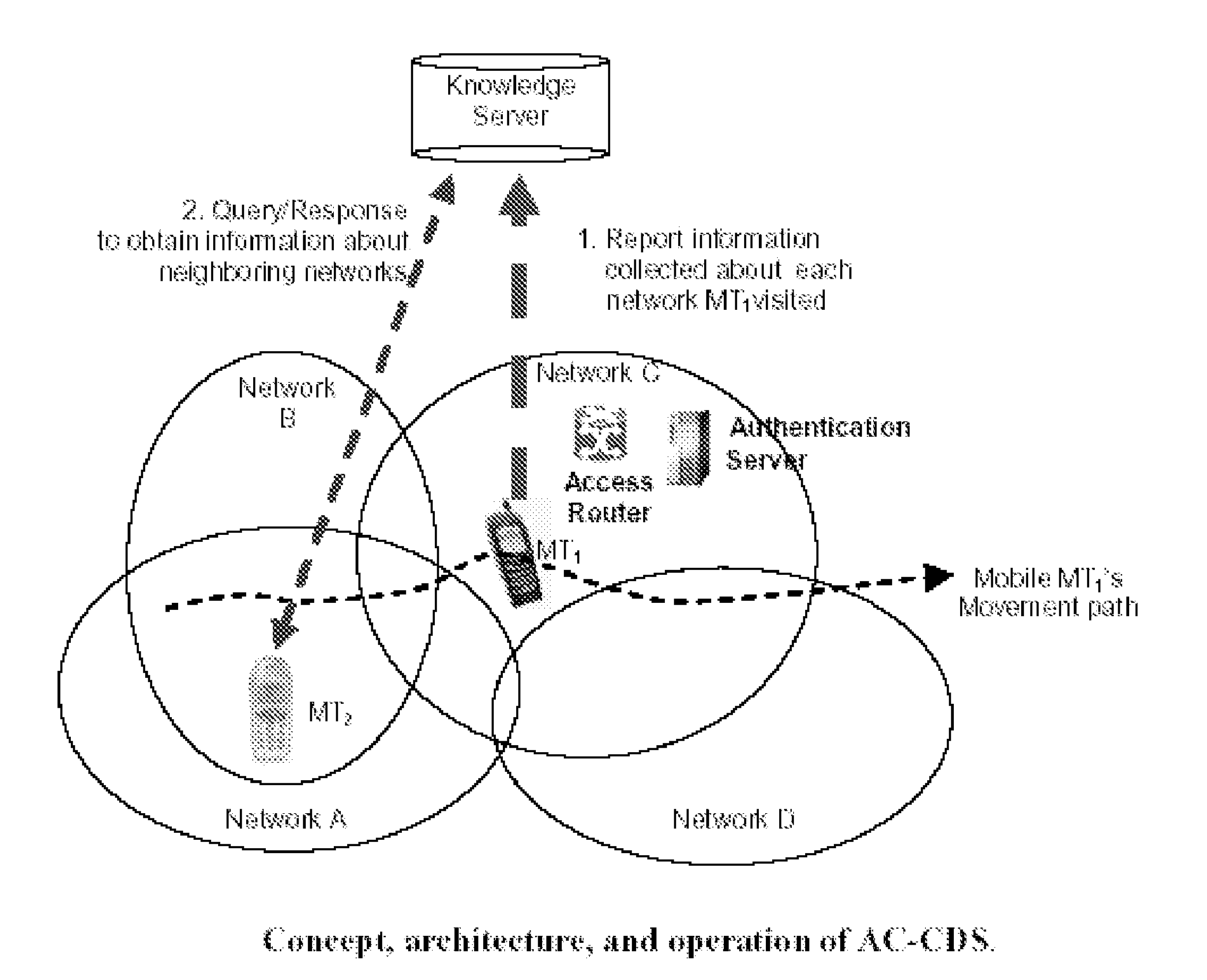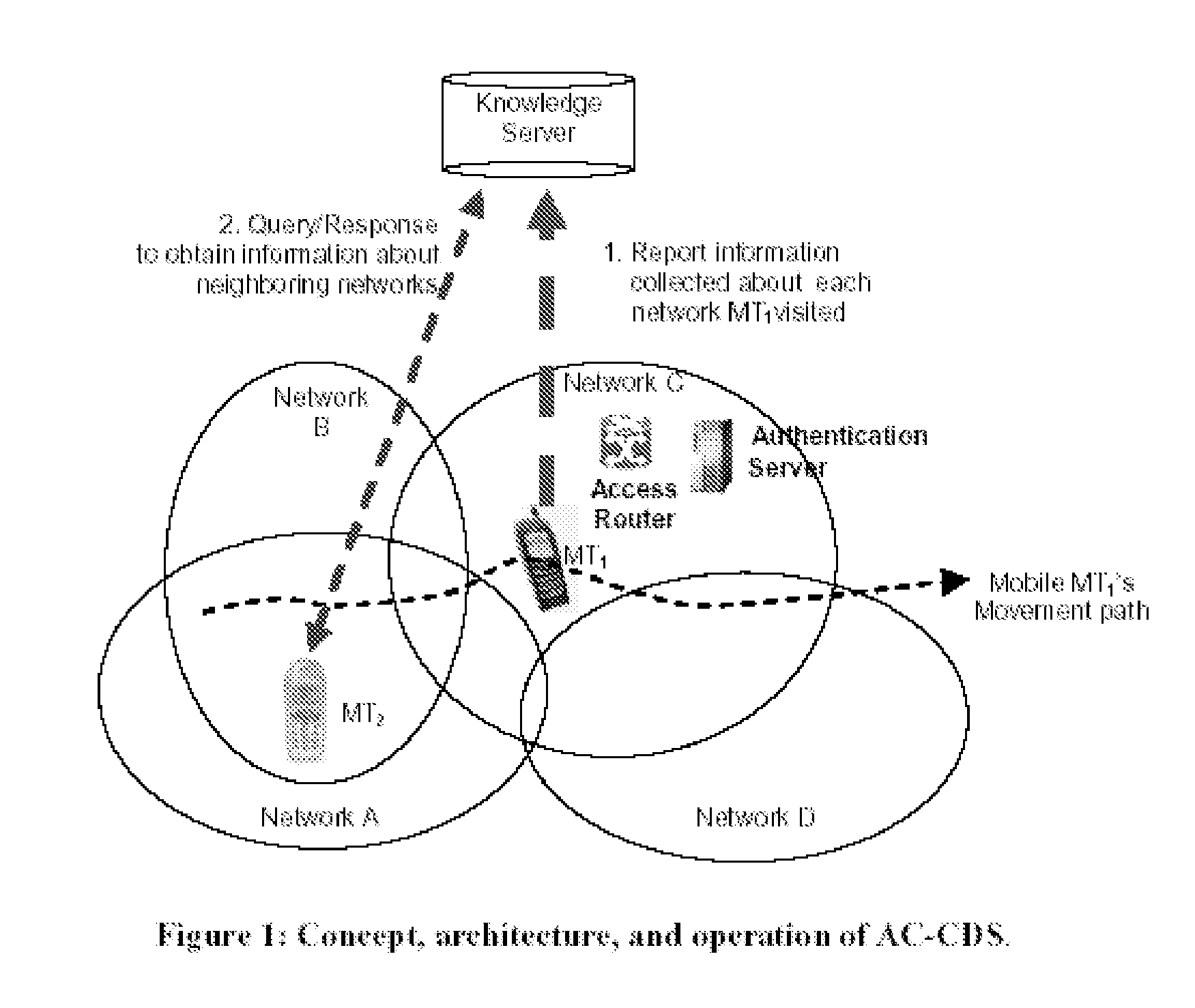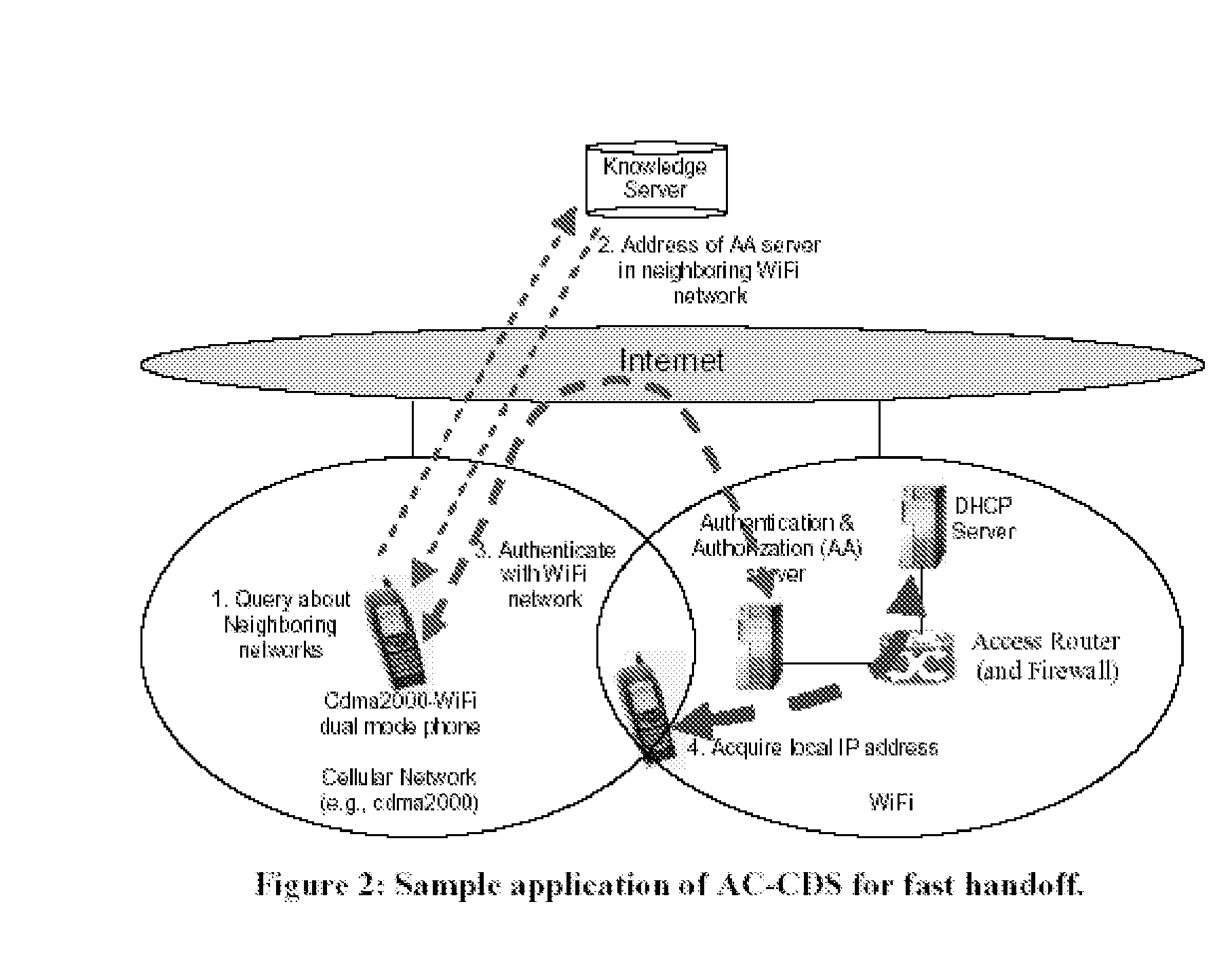Autonomous and heterogeneous network discovery and reuse
- Summary
- Abstract
- Description
- Claims
- Application Information
AI Technical Summary
Benefits of technology
Problems solved by technology
Method used
Image
Examples
Embodiment Construction
[0036] The preferred embodiments of the present invention can significantly improve upon existing methods and / or apparatuses.
[0037] Mobile users and devices want to discover and share a growing range of information as the processing and storage capacities of mobile devices grow rapidly. For example, users may want to discover the locations of nearby networks and location-based dynamic information contents. A mobile device may want to know the existence and capabilities of neighboring networks and the parameters it needs use to access these networks. This allows the device to intelligently decide which network to use next, and to use its existing network connection to authenticate with a selected neighboring network before it enters the selected network's coverage area (hence significantly reducing handoff delays). Existing service discovery frameworks are not effective in discovering neighboring networks and location-based dynamic user information contents. This application sets fo...
PUM
 Login to View More
Login to View More Abstract
Description
Claims
Application Information
 Login to View More
Login to View More - R&D
- Intellectual Property
- Life Sciences
- Materials
- Tech Scout
- Unparalleled Data Quality
- Higher Quality Content
- 60% Fewer Hallucinations
Browse by: Latest US Patents, China's latest patents, Technical Efficacy Thesaurus, Application Domain, Technology Topic, Popular Technical Reports.
© 2025 PatSnap. All rights reserved.Legal|Privacy policy|Modern Slavery Act Transparency Statement|Sitemap|About US| Contact US: help@patsnap.com



